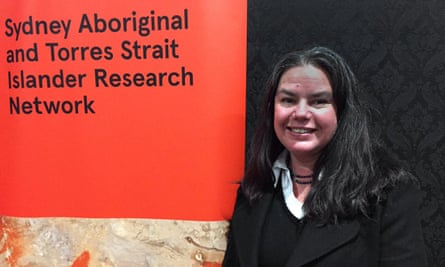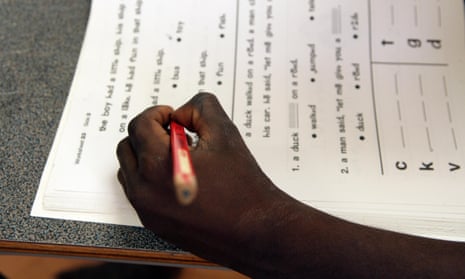Australia will soon have a national school curriculum for Aboriginal Languages and Torres Strait Islander languages.
Jakelin Troy, director of Aboriginal and Torres Strait Islander research at the University of Sydney and a key writer of the curriculum, currently in draft stage, said it will mark the first time in the country’s history that an Australian language will be recognised in schools nationally.
“Children were once beaten for speaking [their own] language,” said Troy. “It’s interesting that it’s come full circle. It’s a very big shift.”
The curriculum, developed in consultation with community groups across the nation, should be finalised by October, Troy said.

It will be published by the Australian Curriculum, Assessment and Reporting Authority and be available as an online resource to primary and high schools that wish to teach an Aboriginal or Torres Strait Islander language.
“This gives schools a model on how to introduce teaching Aboriginal or Torres Strait Islander languages in the way they would teach any other language,” said Troy.
A 2009 study found only 260 schools in the country offered Indigenous Australian language classes, with more than 80 different languages taught.
Troy said one of the most important aspects of teaching an Australian language is involving the community associated with the language. “For example, if you’re in Darug country the main thing for a school is that you need to engage with the local [Darug] population and with the people who are the custodians of that land.”
Darug man Richard Green has taught his language in Sydney high schools for several years. He has witnessed first-hand the positive impact speaking language has had on Indigenous children and said it empowers them to “think along the lines” of their own culture and see the “incredible intelligence” of their own people.
“I’ve seen kids stop stealing cars to learn lingo and turn their lives around,” Green said. “It’s something they have a lot of fun with. They realise its benefits.”
Green is a key figure in the revival of the Darug language, which he began speaking as a teenager. He studies at least two hours a day, breathing new life into word lists and other studies compiled by academic linguists that are held in the State Library of New South Wales.
“Why write the bible if no one is going to read it? Why put them together if no one is going to read it?” he said.
A 10-year study released in 2008 into the mortality rates of the residents of Utopia, a pastoral station north-east of Alice Springs, linked outstation lifestyles including “connectedness to culture, family and land, and opportunities for self-determination” to positive health outcomes.
The findings reflect a 2014 report into Indigenous youth suicide called Culture is Life, which compiled interviews with Indigenous elders and outreach workers from across Australia. Many identified connection to country and culture as vital tools in the fight against a rising epidemic of Indigenous youth suicide.
Troy said while not all the community elders will be fluent, there are always some who are “language knowledgeable” and “any language teacher can teach any language, provided there are resources”.
Developing those teaching resources was the next critical step and more funding was required, Troy said. “Resourcing this curriculum is going to be an issue. But it sets a challenge: to seriously see this implemented we’re going to have to see resourcing put into it.”

Comments (…)
Sign in or create your Guardian account to join the discussion